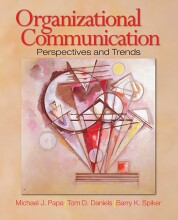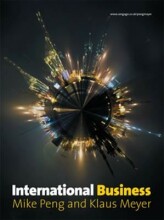Try our study magic for free
Summary: Introduction To Organisation Design
- This + 400k other summaries
- A unique study and practice tool
- Never study anything twice again
- Get the grades you hope for
- 100% sure, 100% understanding
Remember faster, study better. Scientifically proven.
a PDF, study it super fast
- No sign up, email or credit card needed!
- AI makes unlimited flashcards
- Get unlimited quizzes and tests
- Ask AI anything
Create a notebook
- No sign up, email or credit card needed!
- Have and keep perfect overview
- Make flashcards, notes and mind maps
- Review, test and score!
Read the summary and the most important questions on Introduction to Organisation Design
-
IOD Intro
This is a preview. There are 7 more flashcards available for chapter 07/11/2016
Show more cards here -
what are the five core aspects of designing
- multiple models of possible futures with continuous refinement
- thrownness: not a blank state, designer dropped into conditions and has to work his way out of it
- collaboration: no one can know everything, against the heroic tale
- liquid crystal: iterations between leaving open and fixing
- legacy: being conscious of the effects one's actions
-
What does the design process look like?
- search for goals: situation analysis and goal definition
- search for solutions: concept synthesis and concept analysis
- selection: evaluation and decision
-
What are the five interrelated aspects of OD?
- goals and scope
- strategy
- structure
- coordination and control
- processes and people
-
What are the four perspectives on design
- contingency/information sharing
- sociotechnical systems design
- lean management
- human centred job design
-
contingency approach
This is a preview. There are 6 more flashcards available for chapter 09/11/2016
Show more cards here -
Which two questions does OD deal with?
- how to partition a big task into smaller sub-unit tasks
- how to coordinate these smaller sub-unit tasks so they fit together efficiently to realise the bigger task
-
what is a closed system approach?
an organisation is seen as a machine, predictable, with defined norms of behaviour from within the system, not adapting to the environment -
What is an open systems approach?
Change is the center, and it is essential to sense contingencies in the environment and adaption to these changes is perceived as a necessity -
What are the main premises of Burton et al.?
- all five aspects of OD should be aligned in such a way that best fits with challenges in the environment
- all five aspects influence information processing in the organisation (stability of the environment)
- all five aspects of OD should be aligned in such a way that best fits with challenges in the environment
-
what are the four main premises of Gailbraith's information processing perspective?
- an organisation uses information to coordinate and control its activities
- by processing information, the organisation sees what is happening, analyses problems and makes choices on what to do
- the more uncertain the organisational environment, the more information needs to be processed within the organisation, but the quicker the response is needed
- the five aspects can be used to taylor the way organisations can process information to environmental demands
- an organisation uses information to coordinate and control its activities
-
Characteristics of predictable environment
- tasks are characterised by routine work
- little information sharing (long response time)
- tasks can be standardised
- hierarchical control
Read the full summary
This summary +380.000 other summaries A unique study tool A rehearsal system for this summary Studycoaching with videos
- Higher grades + faster learning
- Never study anything twice
- 100% sure, 100% understanding
Topics related to Summary: Introduction To Organisation Design
-
Contingency approach
-
Sociotechnical Systems Design
-
Human Centred Job Design
-
Contingency and structural approach
-
STSD and structural approach
-
Lean principles
-
Structure form a human centred job design
-
Tasks and people
-
Job design VERA
-
Coordination and control systems
-
Designing for a dynamic world
-
OD as change































